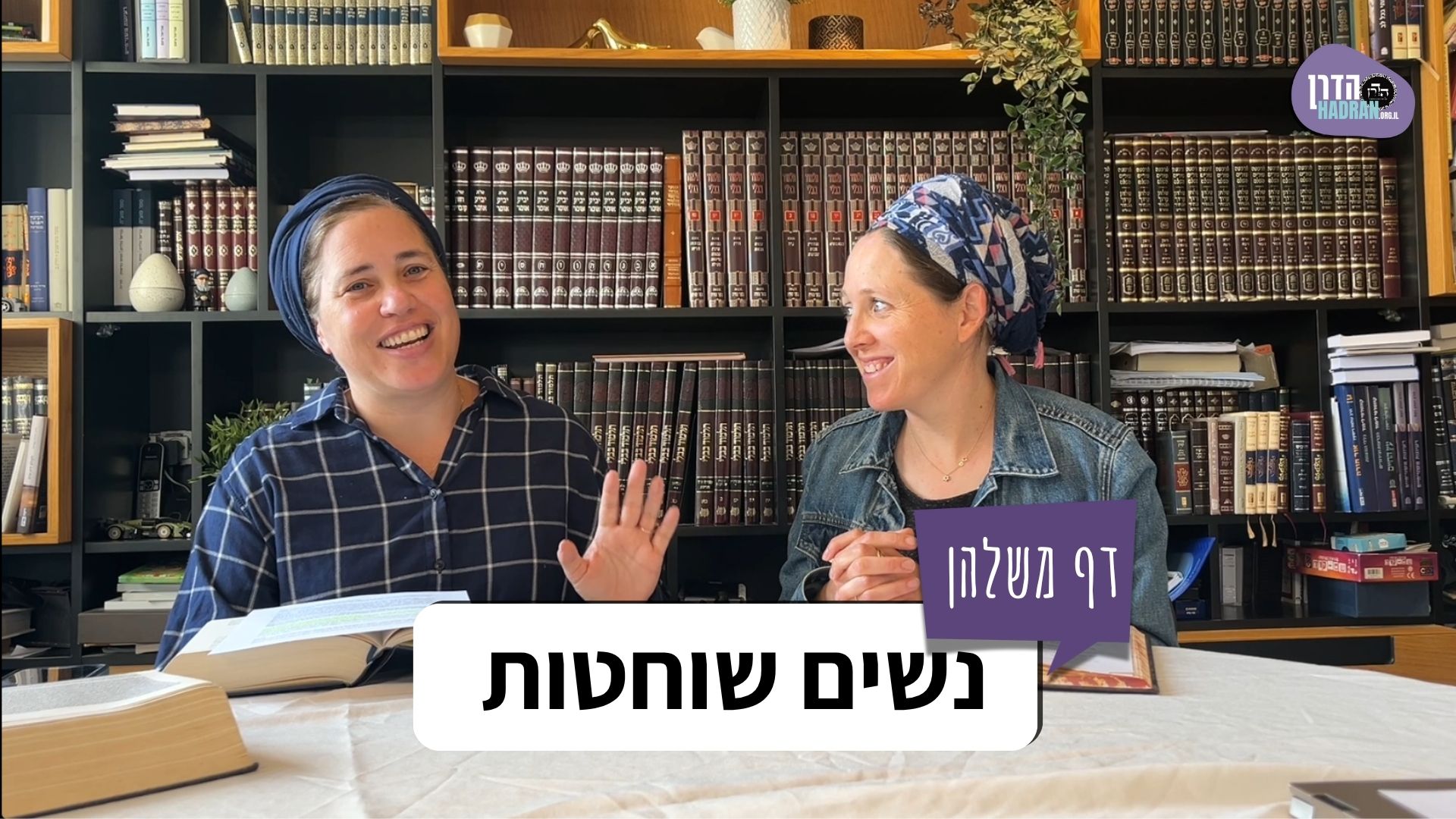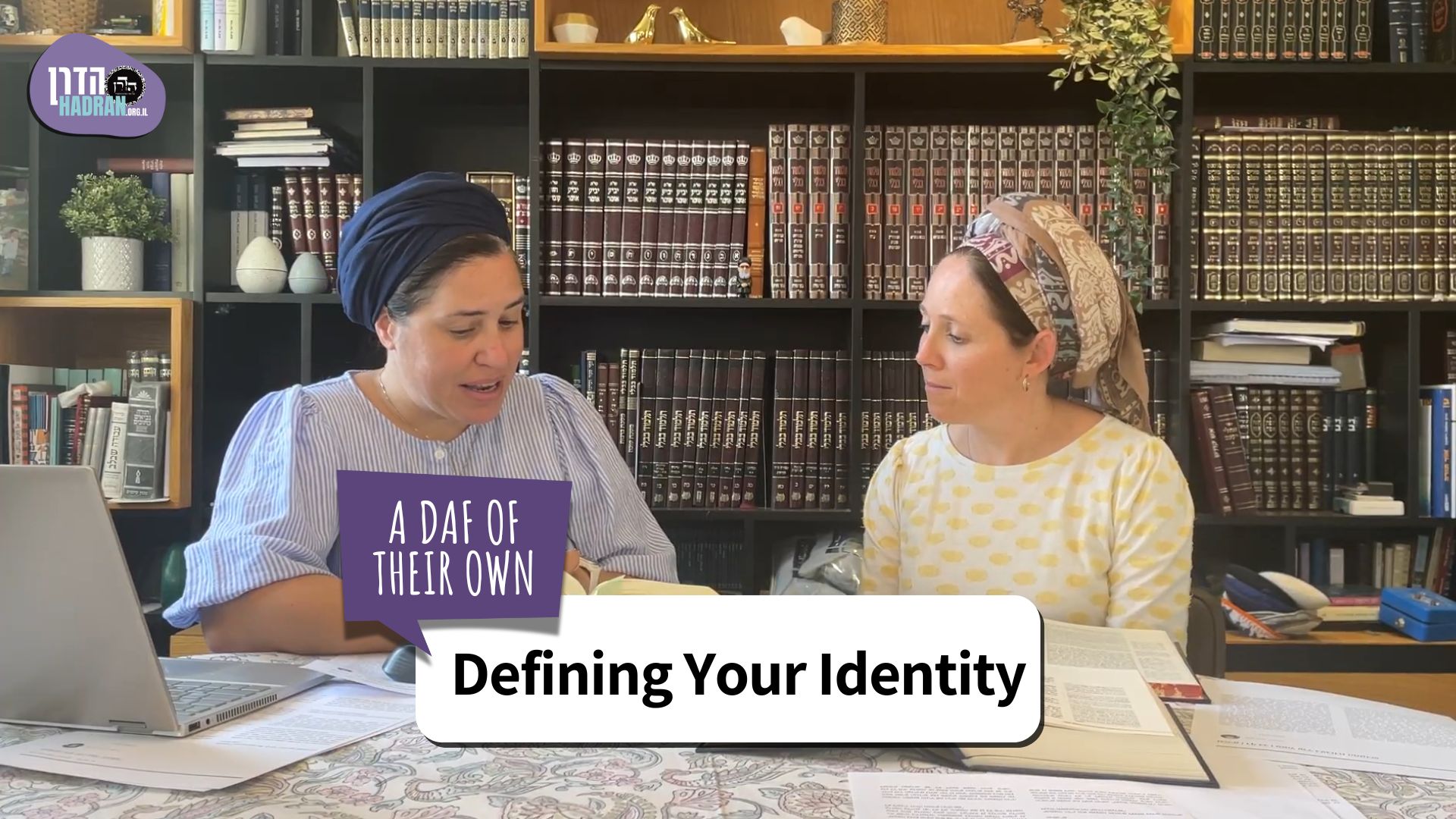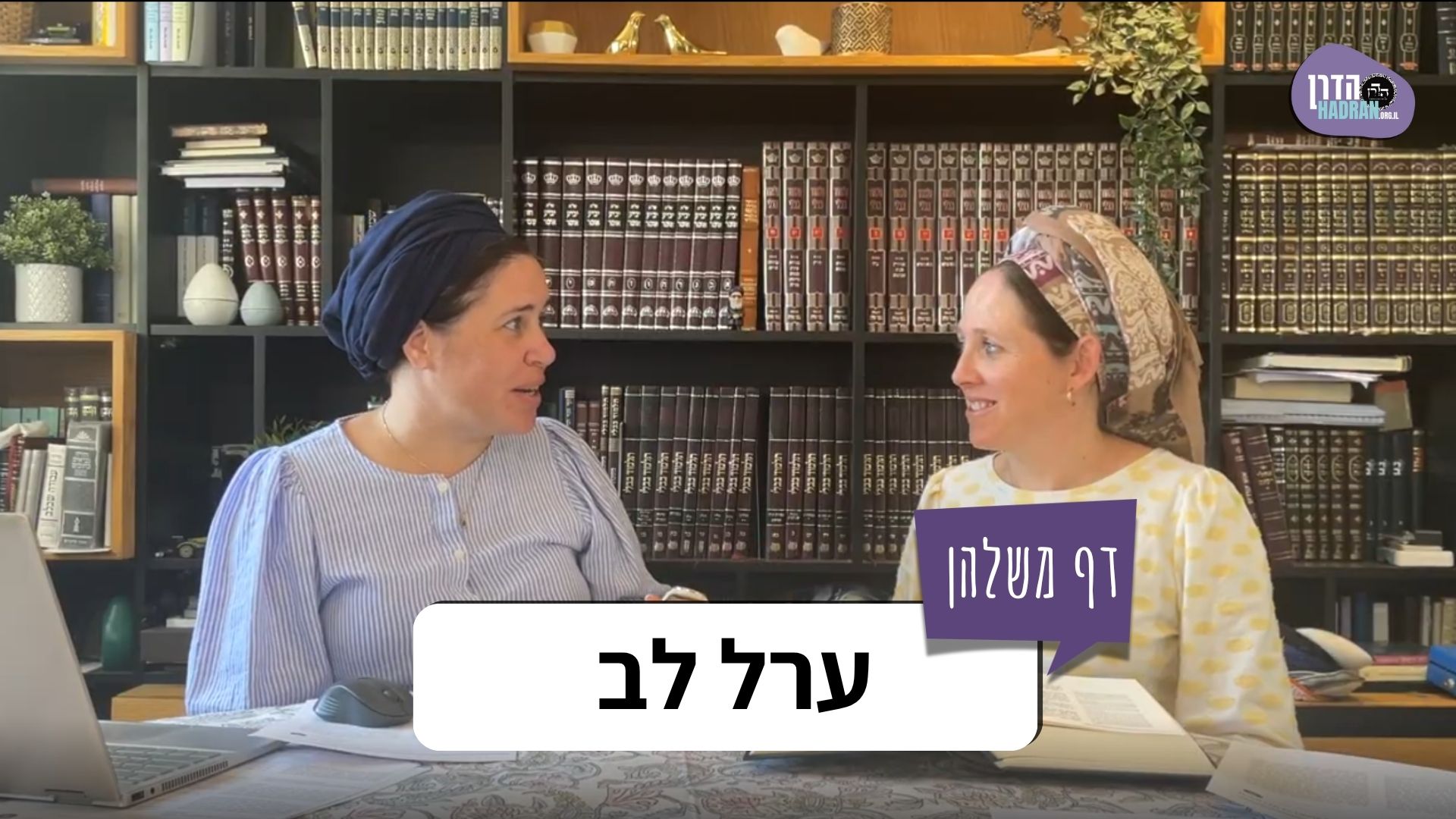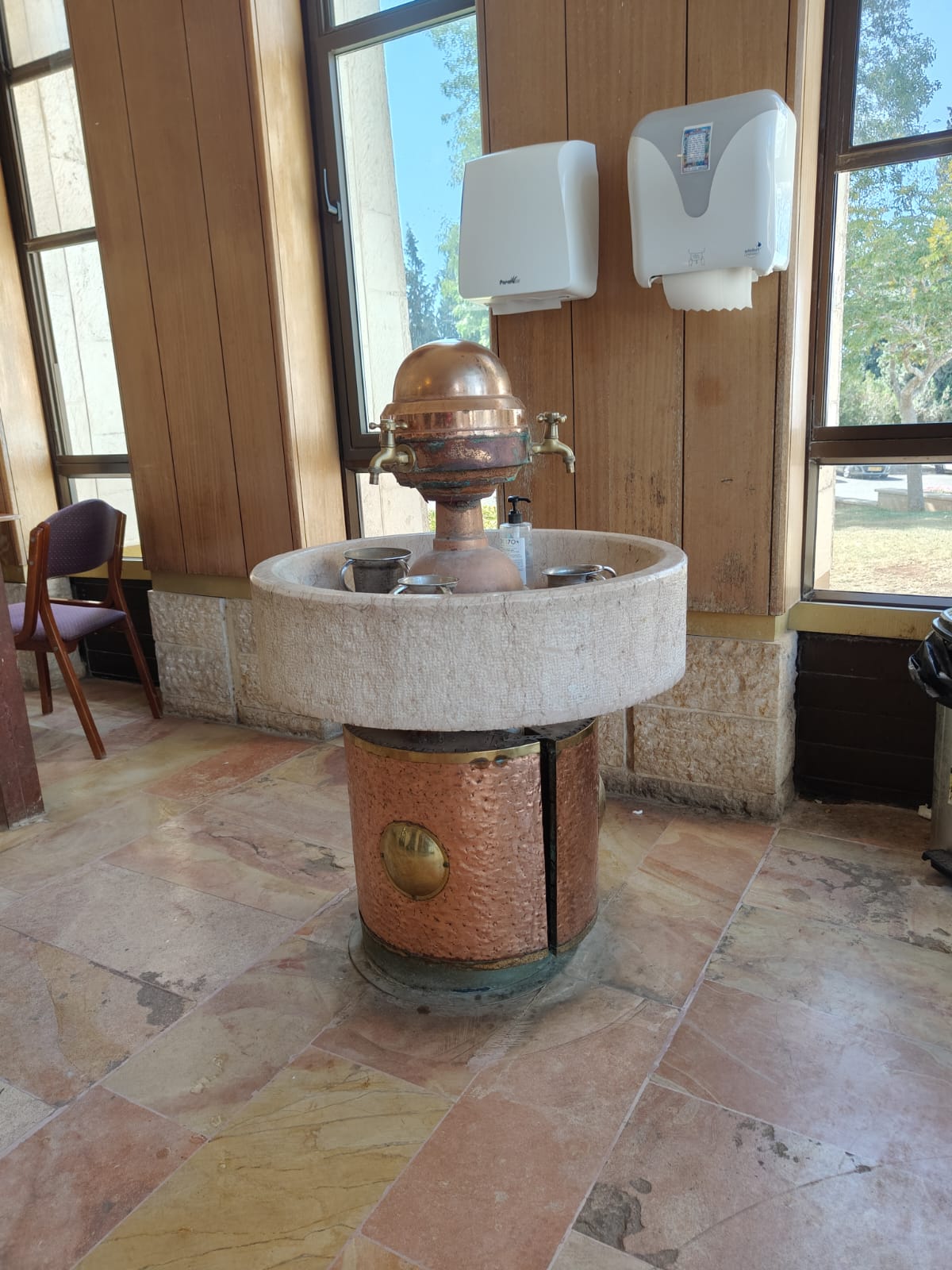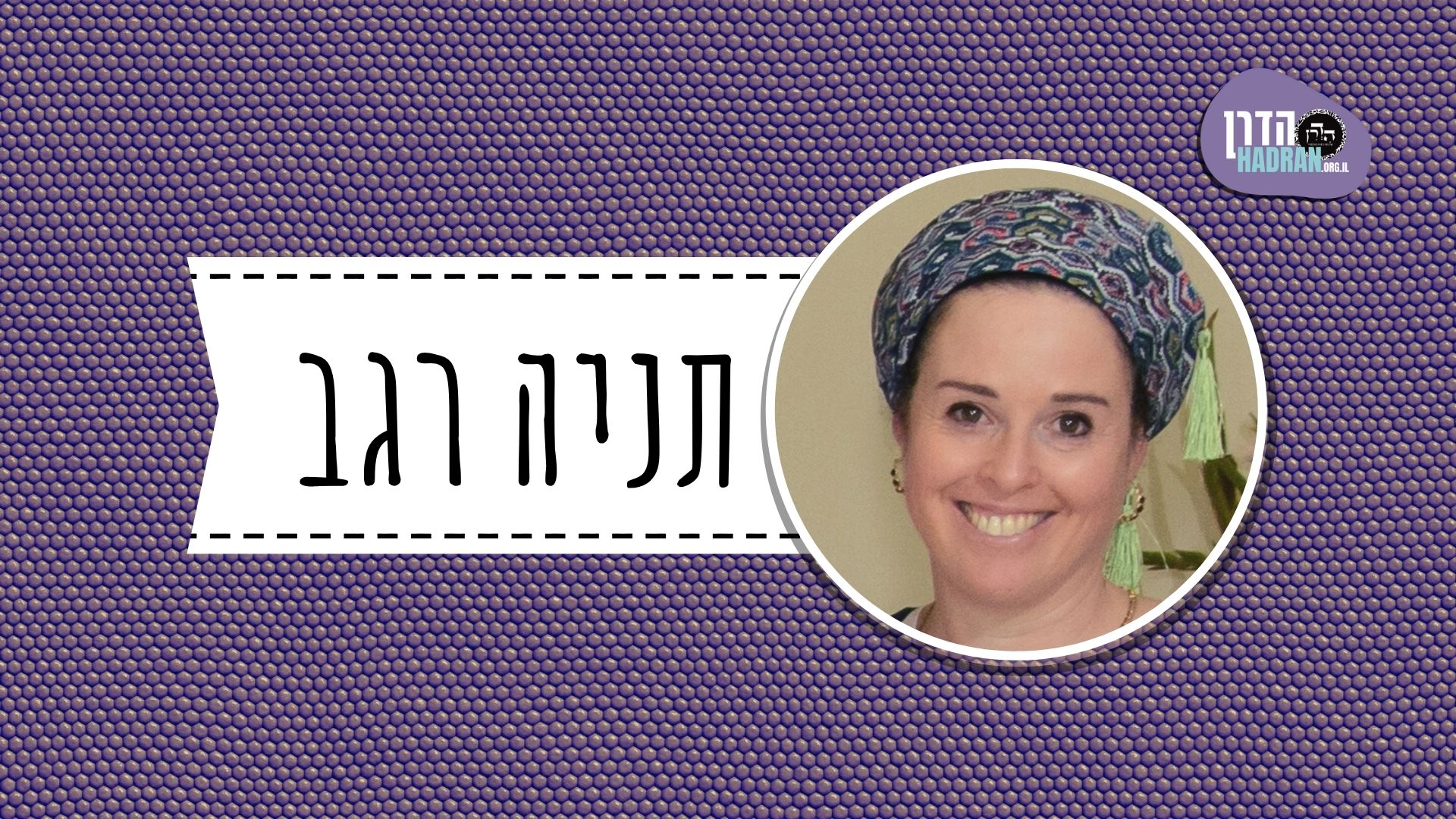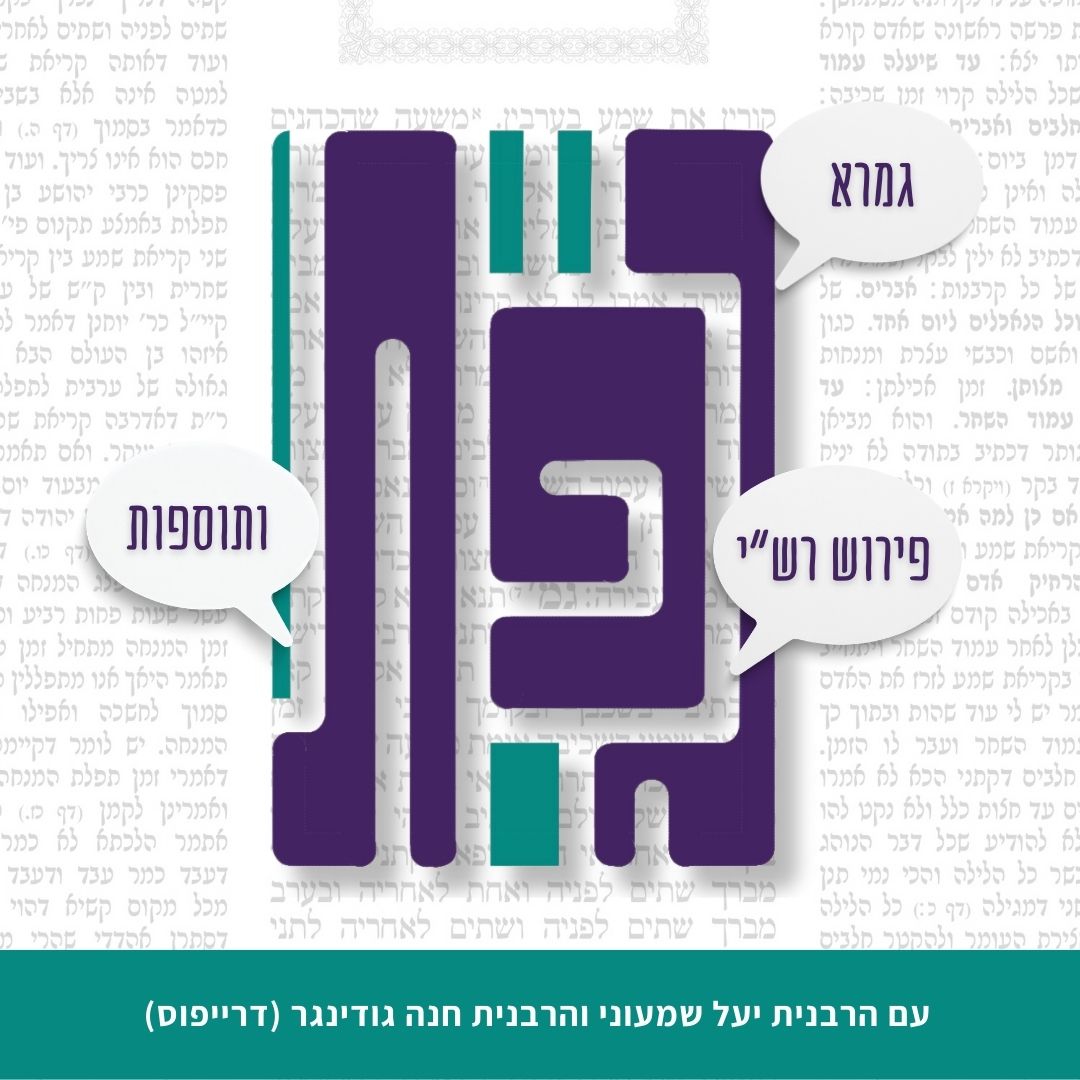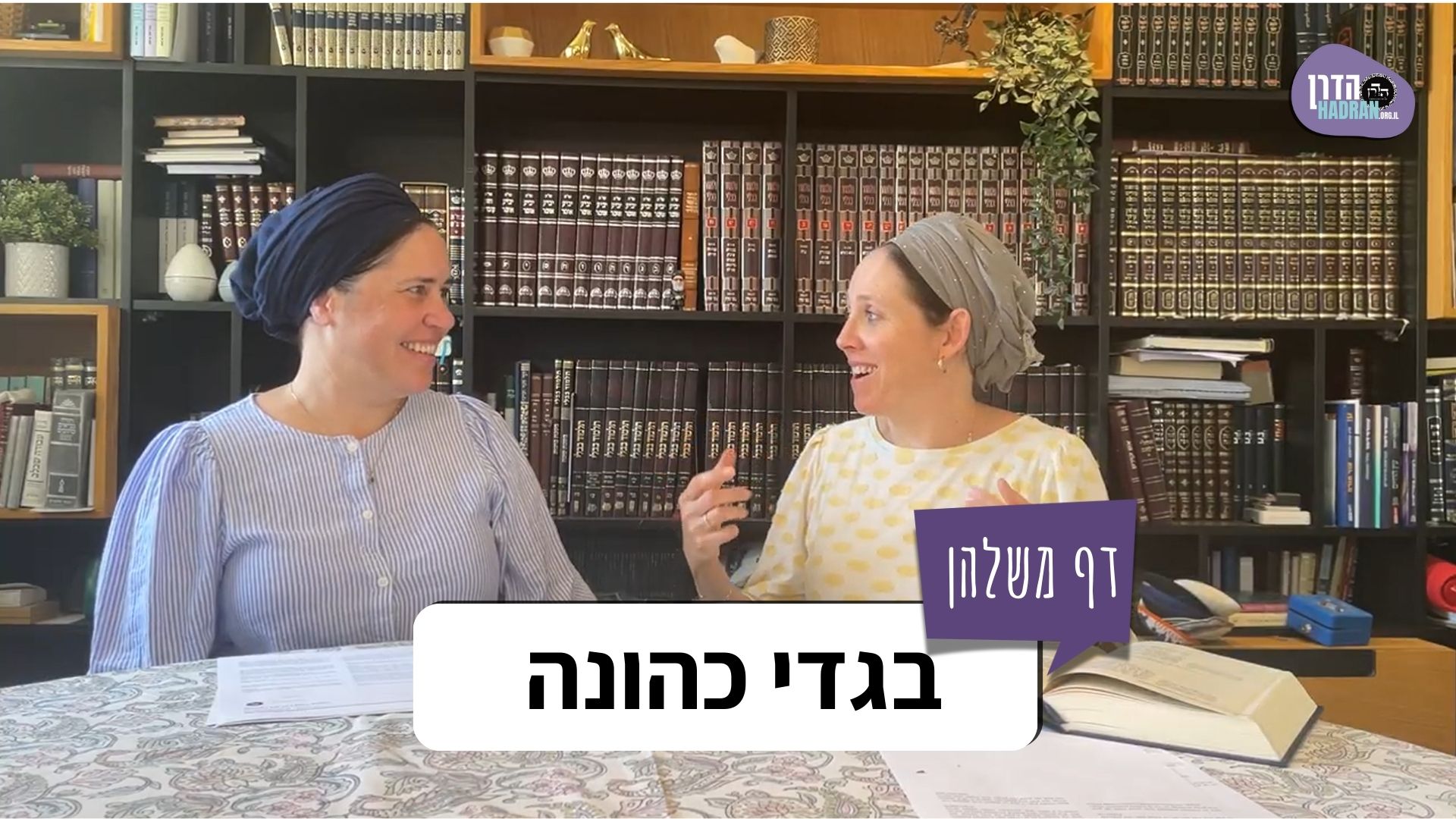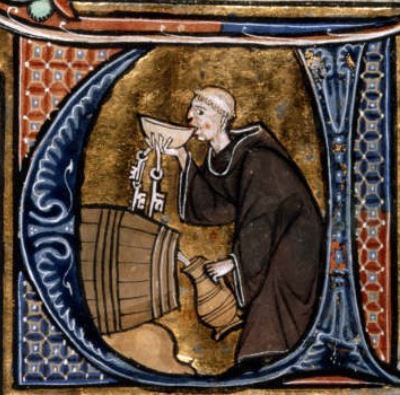This month’s learning is sponsored by Beth Balkany in honor of their granddaughter, Devorah Chana Serach Eichel. “May she grow up to be a lifelong learner.”
Masechet Zevachim
Masechet Zevachim is sponsored by Esther Kremer in loving memory of her father, Manny Gross on his third yahrzeit. “He exemplified a path of holiness and purity, living with kedushah in his everyday life.”
Want to dedicate learning? Get started here:


Summary
Seder Kodashim Kit – Order Form
If the kohen does not stand directly on the floor but rather on an object placed upon the floor while performing one of the central sacrificial rites, this is considered a chatzitza—an interposition—and disqualifies the sacrifice. From where is this derived?
The Mishna presents three examples of such interpositions between the kohen and the floor. Each example is necessary to illustrate different types of chatzitzot.
A braita is cited with Rabbi Eliezer’s ruling: if a kohen has one foot on the ground and the other on an object, and the object is removed such that he can stand solely on the grounded foot, the sacrifice remains valid.
Rabbi Ami raises a question regarding a kohen standing on a loose stone. One version of his inquiry concerns whether the looseness of the stone constitutes a chatzitza. An alternative version explores whether, if the stone were removed and the kohen stood directly on the ground beneath, the rite would be valid.
The Mishna also discusses a debate between the Rabbis and Rabbi Shimon regarding whether accepting the blood with the left hand renders the sacrifice invalid. Their disagreement centers on the interpretation of the verse in Vayikra 4:25. Three explanations are offered by Rav Yehuda, Rava, and Abaye to clarify the root of the dispute. Abaye further notes a third interpretation by Rabbi Elazar, son of Rabbi Shimon, who holds that while the blood must be accepted with the right hand, the sprinkling may be performed with the left.
Rabba bar bar Channa quotes Rabbi Yochanan, who teaches that if the Torah mentions both “kohen” and “finger,” the action must be performed with the right hand. Rava clarifies that Rabbi Yochanan meant that even if either term appears independently, the right hand is required. Abaye limits this principle to essential sacrificial rites. The Gemara explains that Rabbi Shimon requires the right hand if either “finger” appears alone or “kohen” together with “finger”.
According to Rabbi Yochanan’s rule that the mention of “kohen” implies the use of the right hand, why did Rava derive a gezera shava—a textual analogy—from the three mentions of “right” in the leper purification ritual (right hand, right foot, right ear), applying one of them to kemitza (the flour offering), when the verse already includes the word “kohen”? This is there to teach an additional halakha that requires the right hand.
This month’s learning is sponsored by Beth Balkany in honor of their granddaughter, Devorah Chana Serach Eichel. “May she grow up to be a lifelong learner.”
Masechet Zevachim
Masechet Zevachim is sponsored by Esther Kremer in loving memory of her father, Manny Gross on his third yahrzeit. “He exemplified a path of holiness and purity, living with kedushah in his everyday life.”
Today’s daf is sponsored by Elana Kermaier in loving memory of her father, Moishe Fox, Moshe Yehuda ben Harav Binyamin and Chaya Tzipora, on his seventh yahrzeit tomorrow. “I miss his smile, his chuckle, his humor, and his warmth more and more as the years go by.”
Delve Deeper
Broaden your understanding of the topics on this daf with classes and podcasts from top women Talmud scholars.
New to Talmud?
Check out our resources designed to help you navigate a page of Talmud – and study at the pace, level and style that fits you.
The Hadran Women’s Tapestry
Meet the diverse women learning Gemara at Hadran and hear their stories.
Zevachim 24
וְכׇל שְׁנֵי כְתוּבִים הַבָּאִין כְּאֶחָד – אֵין מְלַמְּדִין.
And any two verses that come as one do not teach their common aspect to similar cases. Therefore, one cannot assume that analogous prohibitions carry penalty of death at the hand of Heaven as well.
וּלְמַאן דְּאָמַר מְלַמְּדִין – שְׁתוּיֵי יַיִן הָוֵה לֵיהּ שְׁלִישִׁי, וּשְׁלֹשָׁה לְדִבְרֵי הַכֹּל אֵין מְלַמְּדִין.
And even according to the one who says that they do teach their common aspect, the prohibition against service by those who drank wine also contains explicit mention of death at the hand of Heaven and constitutes a third verse. And all agree that three verses that come as one do not teach their common aspect.
עוֹמֵד עַל גַּבֵּי כֵּלִים, עַל גַּבֵּי בְּהֵמָה, עַל גַּבֵּי רַגְלֵי חֲבֵירוֹ – פָּסוּל. מְנָלַן? דְּתָנָא דְּבֵי רַבִּי יִשְׁמָעֵאל: הוֹאִיל וְרִצְפָּה מְקַדֶּשֶׁת וּכְלֵי שָׁרֵת מְקַדְּשִׁים; מָה כְּלֵי שָׁרֵת – לֹא יְהֵא דָּבָר חוֹצֵץ בֵּינוֹ לְבֵין כְּלֵי שָׁרֵת, אַף רִצְפָּה – לֹא יְהֵא דָּבָר חוֹצֵץ בֵּינוֹ לְבֵין הָרִצְפָּה.
§ The mishna teaches that one who is standing upon vessels, or upon an animal, or upon the feet of another, is unfit to perform rites. The Gemara elaborates: From where do we derive this? This is derived as the Sage from the school of Rabbi Yishmael taught: Since the floor of the Temple courtyard sanctifies the priest to perform the service, and service vessels, i.e., priestly vestments, also sanctify him, one may draw a comparison between the two: Just as with regard to service vessels, nothing may interpose between the priest and the service vessel, so too with regard to the floor, nothing may interpose between the priest and the floor.
וּצְרִיכָא; דְּאִי אַשְׁמְעִינַן כְּלִי – מִשּׁוּם דְּלָאו מִינָא דְּבָשָׂר נִינְהוּ; אֲבָל בְּהֵמָה, דְּמִינָא דְּבָשָׂר הוּא – אֵימָא לָא. וְאִי אַשְׁמְעִינַן בְּהֵמָה – דְּלָא מִינָא דְּאָדָם הוּא; אֲבָל חֲבֵירוֹ, דְּאָדָם הוּא – אֵימָא לָא; צְרִיכָא.
The Gemara adds: And each of the three cases mentioned in the mishna is necessary. As, had the mishna taught us only that a vessel interposes between the priest’s feet and the floor, one might have thought that this is only because it is not a type of flesh, but with regard to an animal, which is a type of flesh, I will say that it does not constitute an interposition. And had it taught us only that an animal interposes, one might have thought that this is only because it is not of the human species, but another person, who is human, I will say that he does not interpose. Therefore, each is necessary.
תַּנְיָא, רַבִּי אֱלִיעֶזֶר אוֹמֵר: רַגְלוֹ אַחַת עַל הַכְּלִי וְרַגְלוֹ אַחַת עַל הָרִצְפָּה, רַגְלוֹ אַחַת עַל הָאֶבֶן וְרַגְלוֹ אַחַת עַל הָרִצְפָּה – רוֹאִין; כֹּל שֶׁאִילּוּ יִנָּטֵל הַכְּלִי וְתִנָּטֵל הָאֶבֶן, יָכוֹל לַעֲמוֹד עַל רַגְלוֹ אַחַת וְיַעֲבוֹד – עֲבוֹדָתוֹ כְּשֵׁירָה; וְאִם לָאו – עֲבוֹדָתוֹ פְּסוּלָה.
It is taught in a baraita that Rabbi Eliezer says: If one of the priest’s feet was on a vessel and one of his feet was on the floor, or if one of his feet was on a stone and one of his feet was on the floor, one sees: Any case where, were the vessel to be removed or the stone removed, he would still be able to stand on one foot and perform rites, his service is valid. But if he would not be able to stand on one foot, his service is disqualified.
בָּעֵי רַבִּי אַמֵּי: נִדַּלְדְּלָה הָאֶבֶן וְעָמַד עָלֶיהָ, מַהוּ? הֵיכָא דְּאֵין דַּעְתּוֹ לְחַבְּרָהּ – לָא תִּיבְּעֵי לָךְ, דְּוַדַּאי חָיְיצָא. כִּי תִּיבְּעֵי לָךְ – דְּדַעְתּוֹ לְחַבְּרָהּ. מַאי? כֵּיוָן דְּדַעְתּוֹ לְחַבְּרָהּ – כְּמָה דִּמְחַבְּרָא דָּמְיָא; אוֹ דִילְמָא, הַשְׁתָּא מִיהָא הָא תְּלִישָׁא?
Rabbi Ami raises a dilemma: If one of the stone tiles of the Temple floor came loose and began to wobble, and the priest stood on it, what is the halakha? The Gemara elaborates: Do not raise the dilemma with regard to a case where he does not intend to attach the stone to the floor again, as it certainly interposes in such a case, since it is considered an item separate from the Temple. Rather, when you raise this dilemma, do so with regard to a case where he intends to attach it again. In such a case, what is the halakha? Does one say that since he intends to attach it, it is considered like that which is already attached? Or perhaps now, at least, it is disconnected, and it is considered a separate item.
רַבָּה זוּטֵי בָּעֵי לַהּ הָכִי, בָּעֵי רַבִּי אַמֵּי: נֶעֶקְרָה הָאֶבֶן וְעָמַד בִּמְקוֹמָהּ, מַהוּ?
Rabba Zuti raises this dilemma like this: Rabbi Ami raises a dilemma: If one of the stone tiles was uprooted and the priest stood in its empty place, what is the halakha?
מַאי קָא מִיבַּעְיָא לֵיהּ? כִּי קַדֵּישׁ דָּוִד – רִצְפָּה עֶלְיוֹנָה קַדֵּישׁ; אוֹ דִילְמָא עַד לְאַרְעִית תְּהוֹמָא קַדֵּישׁ, וְתִיבְּעֵי לֵיהּ כׇּל הָעֲזָרָה כּוּלָּהּ?
The Gemara interjects: What is the dilemma he is raising? Perhaps this is the dilemma: When King David sanctified the site of the Temple, did he sanctify the upper level of the floor but nothing underneath it, or perhaps he sanctified it to the depths of the earth? But if this is the dilemma, let him raise the dilemma with regard to the entire Temple courtyard, i.e., what is the halakha if the entire floor is removed?
לְעוֹלָם פְּשִׁיטָא לֵיהּ דְּעַד אַרְעִית תְּהוֹמָא קַדֵּישׁ; וְהָכִי קָמִיבַּעְיָא לֵיהּ: דֶּרֶךְ שֵׁירוּת בְּכָךְ, אוֹ אֵין דֶּרֶךְ שֵׁירוּת בְּכָךְ? תֵּיקוּ.
The Gemara responds: Actually, it is obvious to him that King David sanctified the site of the Temple to the depths of the earth, and this is the dilemma that he raised: When a priest stands on an unfinished part of the Temple floor, is this a normal manner of ministration, or is this not a normal manner of ministration? Concerning the dilemma itself, the Gemara responds: The dilemma shall stand unresolved.
קִיבֵּל בִּשְׂמֹאל – פָּסוּל, וְרַבִּי שִׁמְעוֹן מַכְשִׁיר. תָּנוּ רַבָּנַן: ״בְּאֶצְבָּעוֹ״ ״וְלָקַח״ – מְלַמֵּד שֶׁלֹּא תְּהֵא קַבָּלָה אֶלָּא בְּיָמִין. ״בְּאֶצְבָּעוֹ וְנָתַן״ – מְלַמֵּד שֶׁלֹּא תְּהֵא נְתִינָה אֶלָּא בְּיָמִין.
§ The mishna teaches: If the priest collected the blood with his left hand, the service is disqualified, and Rabbi Shimon deems it fit. The Sages taught: The verse states: “And the priest shall take of the blood of the sin offering with his finger and put it upon the corners of the altar” (Leviticus 4:25). The conjunction of the term “with his finger” and the term “and the priest shall take” teaches that the collection of the blood may be performed only with the right hand, since the word “finger” in the context of priesthood is always referring to the right hand. Likewise, the phrase “with his finger and put it” teaches that the placing of the blood may be performed only with the right hand.
אָמַר רַבִּי שִׁמְעוֹן: וְכִי נֶאֶמְרָה יָד בְּקַבָּלָה?! אֶלָּא ״בְּאֶצְבָּעוֹ וְנָתַן״ – שֶׁלֹּא תְּהֵא נְתִינָה אֶלָּא בְּיָמִין; הוֹאִיל וְלֹא נֶאֶמְרָה יָד בְּקַבָּלָה – קִיבֵּל בִּשְׂמֹאל כָּשֵׁר.
Rabbi Shimon said: But is the word: Hand, stated with regard to the collection of the blood? Rather, the verse states only: “With his finger and put it,” teaching that the placing of the blood may be performed only with the right hand. Since the word: Hand, is not stated with regard to the collection of the blood, even if one collected the blood with his left hand, the offering is fit.
וְרַבִּי שִׁמְעוֹן – מִמָּה נַפְשָׁךְ; אִי אִית לֵיהּ גְּזֵירָה שָׁוָה – כִּי לֹא נֶאֶמְרָה יָד בְּקַבָּלָה מַאי הָוֵי? וְאִי לֵית לֵיהּ גְּזֵירָה שָׁוָה – כִּי נֶאֶמְרָה יָד בְּקַבָּלָה מַאי הָוֵי?
The Gemara asks: But as for Rabbi Shimon, whichever way you look at it, his opinion is difficult. If he holds that one derives a verbal analogy from the passage discussing a leper (Leviticus, chapter 14), which indicates that all references to hands and fingers mean specifically the right hand, then even if the word: Hand, is not stated with regard to the collection of the blood, what of it? In any event, the word “finger” is stated. And if he does not hold that one derives this verbal analogy, then even if the word: Hand, were stated with regard to the collection of the blood, what of it? The word would have no significance.
אָמַר רַב יְהוּדָה: לְעוֹלָם לֵית לֵיהּ גְּזֵירָה שָׁוָה; וְהָכִי קָאָמַר: וְכִי נֶאֱמַר יַד יָמִין בְּקַבָּלָה?! הוֹאִיל וְלֹא נֶאֱמַר יַד יָמִין בְּקַבָּלָה, קִבֵּל בִּשְׂמֹאל – כָּשֵׁר.
Rav Yehuda says: Actually, he does not hold that one derives this verbal analogy. And this is what Rabbi Shimon is saying: But is the phrase: Right hand, stated with regard to the collection of the blood? Rather, since the phrase: Right hand, is not stated with regard to the collection of the blood, even if one collected the blood with his left hand, the offering is fit.
אֲמַר לֵיהּ רַבָּה: אִי הָכִי, אֲפִילּוּ נְתִינָה נָמֵי! וְעוֹד, וְכִי לֵית לֵיהּ לְרַבִּי שִׁמְעוֹן גְּזֵירָה שָׁוָה?! וְהָתַנְיָא, רַבִּי שִׁמְעוֹן אוֹמֵר: כׇּל מָקוֹם שֶׁנֶּאֱמַר יָד – אֵינָהּ אֶלָּא יָמִין, אֶצְבַּע – אֵינָהּ אֶלָּא יָמִין!
Rabba said to him: If so, then even the rite of placing the blood should be valid when performed with the left hand, since the phrase: Right hand, does not appear with regard to it as well. And furthermore, does Rabbi Shimon really not hold that one derives this verbal analogy? But isn’t it taught in a baraita that Rabbi Shimon says: In every instance in the Torah that the word “hand” is stated, the verse is referring only to the right hand, and whenever the verse mentions “finger,” it is referring only to a finger of the right hand?
אֶלָּא אָמַר רָבָא: לְעוֹלָם אִית לֵיהּ גְּזֵירָה שָׁוָה; וְהָכִי קָאָמַר: וְכִי נֶאֶמְרָה יָד בְּקַבָּלָה?! הוֹאִיל וְלֹא נֶאֶמְרָה יָד בְּקַבָּלָה אֶלָּא אֶצְבַּע, וְאִי אֶפְשָׁר לְקַבֵּל בְּאֶצְבַּע; קִיבֵּל בִּשְׂמֹאל – כָּשֵׁר.
Rather, Rava says: Actually, Rabbi Shimon holds that one derives this verbal analogy, and this is what he is saying: But is the word: Hand, stated with regard to the collection of the blood? Since the word: Hand, is not stated with regard to the collection of the blood, but the word “finger” is stated, and collection cannot be performed with a finger alone, one must conclude that the word “finger” must actually be referring to the placing of the blood. Therefore, while the placing of the blood must be performed with the right hand, if one collected the blood with his left hand, the offering is fit.
אֲמַר לֵיהּ רַב סַמָּא בְּרֵיהּ דְּרַב אָשֵׁי לְרָבִינָא: אִיפְשָׁר דְּעָבֵיד לֵיהּ אֹזֶן לִשְׂפַת מִזְרָק, וּמְקַבֵּל בַּהּ!
Rav Samma, son of Rav Ashi, said to Ravina: But it is possible to fashion a small handle for the rim of the bowl, and one could then hold the bowl with his finger and collect the blood in it. If so, it is possible for one to collect the blood with only his finger.
אֶלָּא אָמַר אַבָּיֵי:
Rather, Abaye says:
בְּמִקְרָא נִדְרָשׁ לְפָנָיו וּלְאַחֲרָיו קָמִיפַּלְגִי.
They disagree with regard to whether a verse is interpreted based on juxtaposition to the language preceding it and to the language following it. According to Rabbi Shimon, a verse is interpreted only based on the language following it. Therefore, when the verse states: “And the priest shall take of the blood of the sin offering with his finger and put it upon the corners of the altar,” the word “finger” is referring only to the placing of the blood and not its collection. The Rabbis hold that the verse is also interpreted based on the language preceding it. Accordingly, they require that both rites be performed with the right hand.
אָמַר אַבָּיֵי: הָא דְּרַבִּי אֶלְעָזָר בְּרַבִּי שִׁמְעוֹן – מַפְּקָא מִדַּאֲבוּהּ, וּמַפְּקָא מִדְּרַבָּנַן. דְּתַנְיָא, רַבִּי אֶלְעָזָר בְּרַבִּי שִׁמְעוֹן אוֹמֵר: כׇּל מָקוֹם שֶׁנֶּאֱמַר אֶצְבַּע בְּקַבָּלָה – שִׁינָּה בַּקַּבָּלָה, פָּסוּל; בַּנְּתִינָה, כָּשֵׁר. וְכׇל מָקוֹם שֶׁנֶּאֱמַר אֶצְבַּע בִּנְתִינָה – שִׁינָּה בַּנְּתִינָה, פָּסוּל; בַּקַּבָּלָה, כָּשֵׁר.
Abaye says: This statement of Rabbi Elazar, son of Rabbi Shimon, diverges from the opinion of his father, and it diverges from the opinion of the Rabbis: As it is taught in a baraita: Rabbi Elazar, son of Rabbi Shimon, says: In every instance in the Torah that the word “finger” is stated with regard to collection of the blood and not with regard to placing of the blood on the altar, if the priest deviated from the proper method of collection and performed it with the left hand, the offering is disqualified, but if he deviated from the proper method of placing the blood, the offering remains fit. And in every instance that the word “finger” is stated only with regard to placing the blood, if the priest deviated from the proper method of placing, the offering is disqualified, but if he deviated from the proper method of collection, the offering remains fit.
וְהֵיכָן נֶאֱמַר אֶצְבַּע בִּנְתִינָה? דִּכְתִיב: ״וְלָקַחְתָּ מִדַּם הַפָּר וְנָתַתָּ עַל קַרְנֹת הַמִּזְבֵּחַ בְּאֶצְבָּעֶךָ״, וְקָסָבַר: מִקְרָא נִדְרָשׁ לְפָנָיו, וְלֹא לִפְנֵי פָנָיו וּלְאַחֲרָיו.
And where is the word “finger” stated only with regard to placing? As it is written: “And you shall take of the blood of the bullock and put it upon the corners of the altar with your finger” (Exodus 29:12). And he holds that a verse is interpreted based on juxtaposition to the language immediately preceding it and not to the language before that which immediately precedes it, nor to the language following it.
אָמַר רַבָּה בַּר בַּר חָנָה אָמַר רַבִּי יוֹחָנָן: כׇּל מָקוֹם שֶׁנֶּאֱמַר אֶצְבַּע וּכְהוּנָּה – אֵינָהּ אֶלָּא יָמִין.
§ Rabba bar bar Ḥana says that Rabbi Yoḥanan says: In every instance in the Torah that it is stated that an action is performed with a finger and by members of the priesthood, it may be performed only with the right hand.
קָא סָלְקָא דַּעְתִּין תַּרְתֵּי בָּעֵינַן – כְּדִכְתִיב: ״וְלָקַח הַכֹּהֵן מִדַּם הַחַטָּאת בְּאֶצְבָּעוֹ״, וְיָלֵיף מִמְּצוֹרָע – דִּכְתִיב: ״וְטָבַל הַכֹּהֵן אֶת אֶצְבָּעוֹ הַיְמָנִית״. וַהֲרֵי קְמִיצָה – דְּלָא כְּתִיב בַּהּ אֶלָּא כְּהוּנָּה; וּתְנַן: קָמַץ בִּשְׂמֹאל – פָּסוּל!
The Gemara comments: It might enter our mind to say that this means that we require both a finger and the priesthood to be stated together in the verse in order to mandate use of the right hand, e.g., as it is written: “And the priest shall take of the blood of the sin offering with his finger” (Leviticus 4:25). And the fact that this verse is referring to a finger from his right hand is derived from a leper, as it is written: “And the priest shall dip his right finger” (Leviticus 14:16). This cannot be correct, as there is the verse that addresses the removal of a handful from a meal offering, in which only the priesthood is written, and yet we learned in a mishna (Menaḥot 6a): If one removed the handful with his left hand, the meal offering is disqualified.
אֶלָּא אָמַר רָבָא: אוֹ אֶצְבַּע, אוֹ כְּהוּנָּה.
Rather, Rava says: This statement means that if the verse mentions either a finger or the priesthood, only the right hand may be used.
אֲמַר לֵיהּ אַבָּיֵי: הֲרֵי הוֹלָכַת אֵבָרִים לַכֶּבֶשׁ – דִּכְתִיב בְּהוּ כְּהוּנָּה, דִּכְתִיב: ״וְהִקְרִיב הַכֹּהֵן אֶת הַכֹּל [וְהִקְטִיר] הַמִּזְבֵּחָה״; וְאָמַר מָר: זוֹ הוֹלָכַת אֵבָרִים לַכֶּבֶשׁ; וּתְנַן: הָרֶגֶל שֶׁל יָמִין בִּשְׂמֹאלוֹ, וּבֵית עוֹרָהּ לַחוּץ!
Abaye said to Rava: But this is contradicted by the verse discussing the conveyance of the limbs of the daily burnt offering to the ramp of the altar, as priesthood is written with regard to it, as it is written: “And the priest shall sacrifice the whole and make it smoke upon the altar” (Leviticus 1:13), and the Master said that this verse is referring to the conveyance of the limbs to the ramp. And yet we learned in a mishna (Tamid 31b): When the priest conveys the limbs to the ramp, the foot of the right side of the offering is carried in the left hand of the priest, and the place of its skin, i.e., the side of the limb covered in skin, is held facing outward. Clearly, use of the left hand does not disqualify the conveyance of the limbs.
[כִּי אָמְרִינַן] אוֹ אֶצְבַּע אוֹ כְּהוּנָּה – בְּדָבָר הַמְעַכֵּב כַּפָּרָה, דּוּמְיָא דִּמְצוֹרָע.
The Gemara responds: When we say that if the verse states either finger or priesthood then the left hand is disqualified, this is only with regard to a matter that precludes atonement, i.e., a rite whose performance is indispensable to the atonement, similar to the sprinkling of the oil on the leper (see Leviticus 14:16). The conveyance of the limbs, by contrast, is not indispensable to atonement.
וַהֲרֵי קַבָּלָה – דִּכְתַב בְּהוּ כְּהוּנָּה, וְדָבָר הַמְעַכֵּב בְּכַפָּרָה הוּא; וּתְנַן: קִבֵּל בִּשְׂמֹאל – פָּסוּל, וְרַבִּי שִׁמְעוֹן מַכְשִׁיר!
The Gemara asks: But isn’t there the collection of the blood in a service vessel, about which priesthood is written and which is a matter that precludes atonement? And yet we learned in the mishna: If one collected the blood with his left hand, the blood is disqualified for offering, and Rabbi Shimon deems it fit.
רַבִּי שִׁמְעוֹן תַּרְתֵּי בָּעֵי.
The Gemara responds: Rabbi Shimon requires that both matters appear in the verse, i.e., both finger and priesthood.
מִי בָּעֵי רַבִּי שִׁמְעוֹן תַּרְתֵּי?! וְהָתַנְיָא, רַבִּי שִׁמְעוֹן אוֹמֵר: כׇּל מָקוֹם שֶׁנֶּאֱמַר יָד – אֵינוֹ אֶלָּא יָמִין, אֶצְבַּע – אֵינוֹ אֶלָּא יָמִין!
The Gemara asks: Does Rabbi Shimon really require both? But isn’t it taught in a baraita that Rabbi Shimon says: In every instance in the Torah that the word “hand” is stated, the verse is referring only to the right hand, and whenever the verse mentions “finger,” it is referring only to a finger of the right hand?
אֶצְבַּע – לָא בָּעֲיָא כְּהוּנָּה, כְּהוּנָּה – בָּעֲיָא אֶצְבַּע.
The Gemara responds: According to Rabbi Shimon, if the verse mentions only “finger,” then it does not require a mention of the priesthood as well for the limitation to apply. But if the verse mentions only the priesthood, it requires a mention of “finger” for the limitation to apply.
וְאֶלָּא כֹּהֵן לְמָה לִי? (בְּכִיהוּנָּן) [בְּכִיהוּנּוֹ].
The Gemara asks: But according to Rabbi Shimon, if the mention of the priesthood alone does not suffice to disqualify the right hand, then why do I need the superfluous reference to a priest with regard to the collection of the blood? After all, the verse already states that the collection must be performed by the sons of Aaron. The Gemara responds: The additional mention of the priesthood indicates that the priests must perform the collection of the blood in their priestly state, i.e., while wearing the priestly vestments.
וַהֲרֵי זְרִיקָה – דְּלָא כְּתִב בְּהוּ אֶלָּא כְּהוּנָּה; וּתְנַן: זָרַק בִּשְׂמֹאל – פָּסוּל, וְלָא פְּלִיג רַבִּי שִׁמְעוֹן!
The Gemara asks: But isn’t there the sprinkling of the blood, concerning which only the priesthood is written in the verse, and we learned: If one sprinkled the blood with his left hand it is disqualified; and Rabbi Shimon does not disagree with this ruling, indicating that Rabbi Shimon holds that a mention of the priesthood does not require a mention of “finger”?
אָמַר אַבָּיֵי: פְּלִיג בְּבָרַיְיתָא – דְּתַנְיָא: קִיבֵּל בִּשְׂמֹאל – פָּסוּל, וְרַבִּי שִׁמְעוֹן מַכְשִׁיר. זָרַק בִּשְׂמֹאל – פָּסוּל, וְרַבִּי שִׁמְעוֹן מַכְשִׁיר.
Abaye says: He disagrees with this ruling in a baraita, as it is taught in a baraita: If one collected the blood with his left hand, it is disqualified, and Rabbi Shimon deems it fit. Additionally, if one sprinkled the blood with his left hand, it is disqualified, and Rabbi Shimon deems it fit.
אֶלָּא הָא דְּאָמַר רָבָא: ״יָד״–״יָד״ לִקְמִיצָה, ״רֶגֶל״–״רֶגֶל״ לַחֲלִיצָה, ״אֹזֶן״–״אֹזֶן״ לִרְצִיעָה; לְמָה לִי? מִדְּרַבָּה בַּר בַּר חָנָה נָפְקָא!
The Gemara asks: But that which Rava says with regard to the superfluous phrases in the passage discussing a leper: One derives a verbal analogy between “hand” and “hand” mentioned with regard to the removal of a handful from a meal offering, to indicate that the latter must also be performed with the right hand. Additionally, one derives a verbal analogy between “foot” and “foot” mentioned with regard to the ḥalitza ritual. And one derives a verbal analogy between “ear” and “ear” mentioned with regard to the piercing of a Hebrew slave’s ear with an awl. One may ask: Why do I need the first analogy? The requirement that the handful be removed with the right hand can be derived from the statement of Rabba bar bar Ḥana above, since priesthood is mentioned in the verse describing it.
חַד לְקוֹמֶץ, וְחַד לְקִידּוּשׁ קוֹמֶץ.
The Gemara responds: Both derivations are necessary, one for the removal of the handful from a meal offering, and one for the sanctification of the handful, i.e., placing it into a second service vessel. Both must be performed with the right hand.



